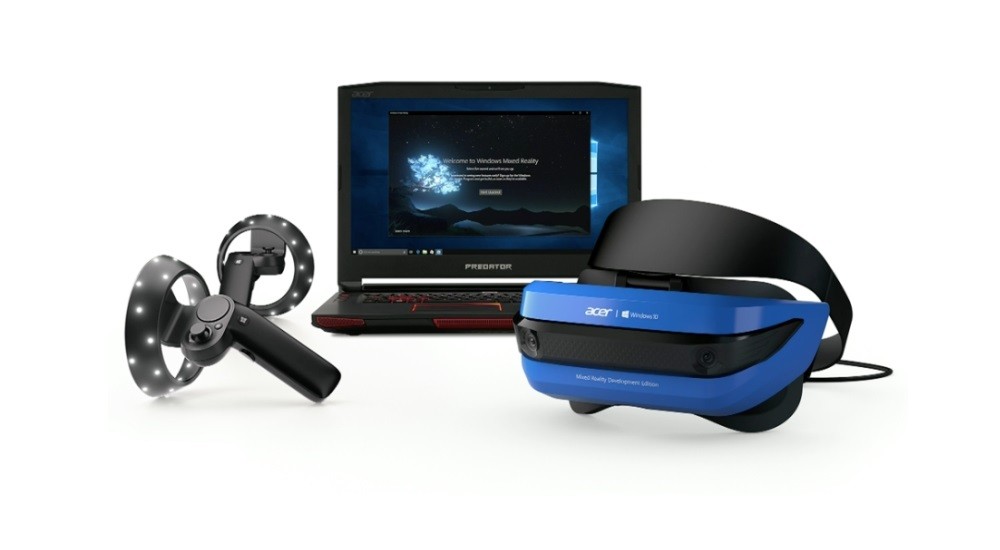Day two of the Build 2017 developer conference was known to bring along some interesting announcements on the Mixed Reality front, but Microsoft pulled a swift one by announcing its first ‘Windows Mixed Reality’ controllers. The Redmond giant is heavily banking on its strategy for the virtual+augmented (mixed) reality world. Thus, it is unveiling the controllers because the company’s fully aware that they’ll help elevate the user experience way further.
Since Microsoft is building its Windows mixed reality platform on next-generation technology, its VR/AR headsets do not require an external sensor array to help users interact with the virtual world. They come integrated with inside-out tracking tech, which is packed inside its widely-known HoloLens.
These motion controllers carry within them the same innovation, which enables six degrees of freedom motion control without extra independent hardware. This means they’re aware of their own position and can be tracked by the headsets.
There is no need to install hardware on the walls around you. We created the controllers as a high-quality and comfortable input device with the same ease of setup and portability as our headsets.
You may have been introduced to the very first range of VR headsets debuted by Microsoft’s hardware partners — HP, Acer, Lenovo, Asus, and others — earlier in October at its hardware-focused event. The hardware for the same have now been upgraded to include built-in cameras which are capable of tracking its own position, as well as objects in the real world.
But, one should always keep in mind that the headsets will only be able to track the motion controllers only when they’re in the field of vision of the camera set placed on the front of the headset. The Windows mixed reality motion controllers not only pack these sensors (which give sub-millimeter precision without complex setups) but also includes a touchpad, thumb sticks, a trigger and a grip to hold the same. They look similar to Oculus’ touch controller that were released earlier this year.
Talking about the user experience, the official press statement mentions,
A customer who pairs a Windows Mixed Reality headset with motion controllers will have a rich and immersive experience across creativity tools, productivity, games, and entertainment.
Acer, who appears to be Microsoft’s primary hardware partner, has already baked in the camera system into its VR headset and has made them available for a decent $299. The headset work on low configuration PCs and do not require beastly gaming rigs to power the VR experience.
The hardware giant is bundling the motion controllers with the VR headset for 100 bucks extra. This means you’ll have to shell out a little extra, $339, to purchase the combo. Microsoft is controlling the price of the controllers and has set it to $100 at the moment. It has handed over the decision to price the headset to hardware makers. They’ll still be cheaper than the more popular alternatives such as Oculus Rift and HTC Vive, thus, will help make this technology popular among the masses.






